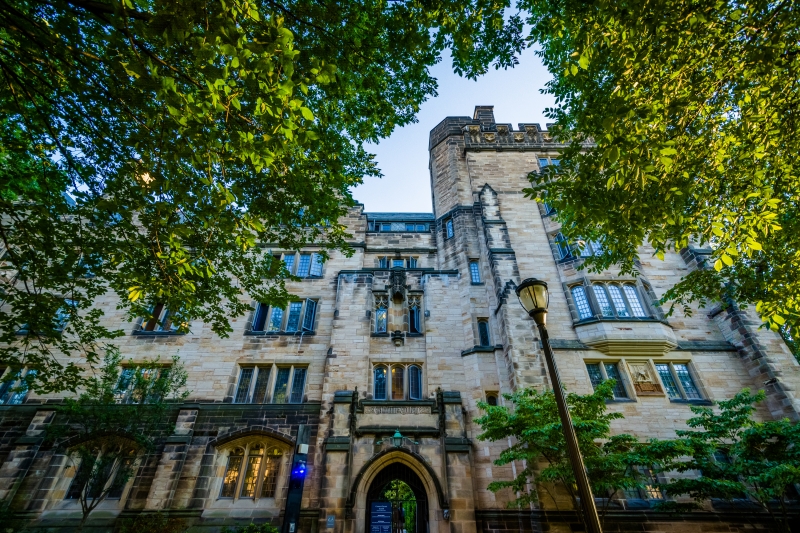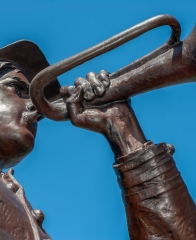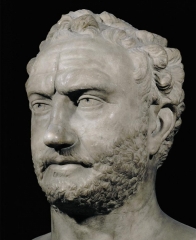 / Identity and the University Campus
Subscribe
/ Identity and the University Campus
Subscribe

MIT looks like a science institute. That is to say, the university’s identity is evident in the architecture of its campus. The hyper-modern, robot-like buildings that dominate MIT (think Frank Gehry’s fragmentary Stata Center, I. M. Pei’s severe Dreyfus Building, and Steven Holl’s spongy Simmons Hall) reflect MIT’s mission of advancing and educating students in science and technology; the appearance and functionality of these buildings leave no doubt that MIT is a locus of innovation.
We can read MIT’s identity in its architecture because buildings express the values of the institutions that construct them. Like the clothes we wear, the buildings we occupy tell the world something about who we are. College campuses exemplify this idea. Thomas Jefferson drew inspiration for his masterplan of the University of Virginia from the architecture of classical antiquity and its symbolic associations with rationality, democracy, and civic responsibility. His UVA design was therefore an expression of republican ideals, ideals that he wished to perpetuate by educating generations of future Americans. (It would, however, be remiss to overlook the incongruity between Jefferson’s honorable intentions and shameful actions; UVA was largely constructed by slaves, many Jefferson’s own.) Mies van der Rohe’s sleek, International Style design of the Illinois Institute of Technology was meant to reflect the university’s progressive approach to education. By distancing IIT from the Collegiate Gothic characteristic of most elite American universities, Mies made a statement about the kind of place IIT would be.
However, not all campus architecture is noble; there is a dark side to university architecture and its expression of institutional identity. Higher education has been—and continues to be—plagued with elitism and bigotry, and this troubling history is written into the architecture of our universities.
Yale’s Calhoun College is named after John C. Calhoun, a defender of slavery. Slave iconography is embedded into the college’s architecture; for instance, one stained glass window depicts black slaves carrying bushels of cotton, and another a shackled black man kneeling in front of Calhoun. (The second of these has since been altered and now shows Calhoun standing alone.) In 2016, Corey Menafee, a cafeteria employee at Calhoun who became frustrated with these images, stood on a table and smashed a glass panel. His demonstration spurred the support of students, who went on to protest for the renaming of the college and the removal of its racist images. Although Yale President Peter Salovey initially decided to ignore protestors and retain Calhoun’s name, claiming that changing it would erase history rather than confront it, he reversed his verdict in February 2017; the college will soon be renamed to honor Grace Murray Hopper.
Many facilities and academic programs at Princeton are named after President Woodrow Wilson, a vocal segregation advocate. An alumnus, faculty member, and benefactor of the university, Wilson’s name and image are so ubiquitous around Princeton that the campus is often dubbed “the Wilsonic Temple”. In 2015, over a hundred Princeton students participated in a sit-in at the university president’s office, calling for Wilson’s omnipresence on campus to be diminished and for cultural competency training to be required of all faculty. Princeton has not yet made strides to address the students’ demands.
Similar stories can be told about Georgetown (whose Mulledy and McSherry Halls were named after past university presidents who facilitated the sale of hundreds of slaves in order to pay off university debts), Duke (where a residence hall was dedicated to Charles Aycock, a white supremacist), and the University of Cape Town and Oxford University (homes of statues commemorating British imperialist and apartheid legislator Cecil Rhodes). Students at each of these universities have fought for those buildings and monuments to be renamed or simply removed altogether.
The trends in these cases are somewhat promising. Of the universities discussed, only Princeton and Oxford have failed to act upon the demands of protestors. But there are countless other universities where students have protested in a similar fashion to no avail, or where productive discussions about disturbing institutional histories have been silenced or simply not taken place. At a time when racial inequality continues to be rampant in higher education, it counts for something every time a university takes a stand against that inequality by, for instance, removing racist or colonialist iconography from a building.
Many have accused the protesting students, faculty, and staff of attempting to erase history, of doing the architectural equivalent of cutting out the parts they don’t like from history textbooks. These critics argue that simply removing names and images from buildings does little to address racism, the real issue at hand. What they fail to acknowledge, however, is that these protestors never simply fight for the removal of names and images; their demands are always accompanied by equal demands for institutional and curriculum reform. But the protestors’ claims would be no less important even if they weren’t accompanied by such demands. Racist iconography is in and of itself damaging to people of color. African Americans are gravely underrepresented at elite colleges both as students and faculty, and racist iconography reinforces illegitimate ideas about who does or does not belong at those institutions, encouraging continued racial inequality.
Winston Churchill famously said, “We shape our buildings; thereafter, they shape us.” When a university fails to confront the legacy of racism—when it normalizes the veneration of imperialists and white supremacists by allowing their memory to live on in campus buildings—it allows that legacy to shape the members of its community. Sometimes, however, universities are given the opportunity to intervene in their architecture. It is not always financially feasible or environmentally desirable to tear down a building and start from scratch, but it’s easy enough to rename a building or take down a portrait of a corrupt benefactor. When these universities reshape their buildings, they make a crucial step toward reshaping themselves. This is not erasing history; it is taking charge of our identities, and respecting that architecture is a materialization of the ideas that matter to us.
Angela Sun is a philosophy PhD student at the University of Michigan with interests in aesthetics and ethics. She received her BA in philosophy and architecture from Wellesley College in 2017.
Photo Credit: Jon Bilous, "Calhoun College, on the campus of Yale University, New Haven, Connecticut," via Shutterstock, 21 June 2017.








